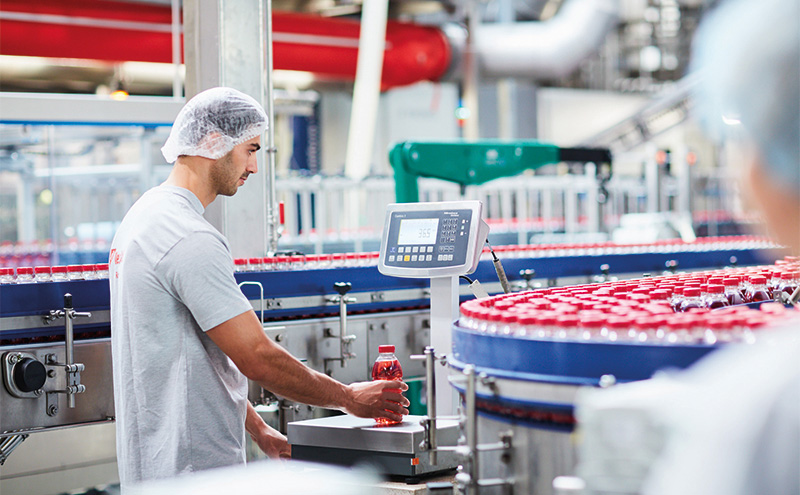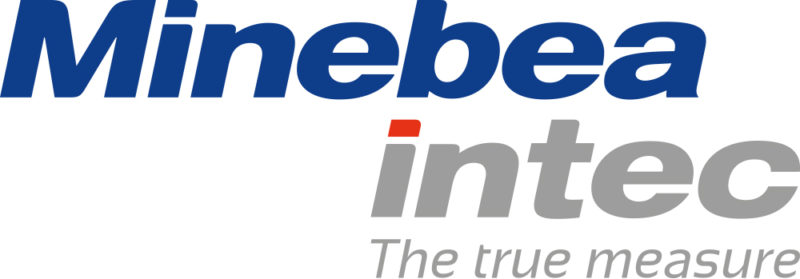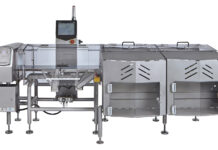PROMOTIONAL FEATURE
GETTING your packaging right and at a consistent weight provides maximum control over product volume – but how can you check packaging compliance whilst maintaining control of product giveaway? As industry looks for alternative packaging that is environmentally friendly, Colin Maher, Country Manager UK and Ireland at Minebea Intec, explains all about the impact of variable weight packaging under the UK weight regulation and how to be compliant whilst giving away less product.
Q) WHAT IS PRODUCT TARE?
A) That’s the packaging – any packaging. What you pay for is the quantity that is marked on the outside of a packet. It’s the quantity of the product inside, not the total package weight. As industry is looking to change packaging and move away from plastic to more environmentally friendly packaging, they need to be aware of the implications legally on the overall weight.
Q) WHAT ARE THE DIFFERENT TYPES OF PRODUCT TARE?
A) The variability of a product packaging weight can be defined as either a fixed tare or a variable tare. If your product is classed as variable tare, you will have to allow for this by adjusting your target weight higher than your declared weight marked on the product. Effectively you will be required to compensate for this variability of tare by giving more products away inside the package, often referred to as overfill or giveaway. Even today a high percentage of industry still gives away more than is required, just to be safe. This is a bit like traveling along a road and driving at a lower speed since you are not sure of the speed limit. The main reason for this safety margin is the sampling method. Sampling is like checking your speed only once every 30 minutes or an hour. Since you can’t see what is happening in-between this time, it makes sense to stay on the safe side and drive slower. Sampling in relation to the regulation means checking the weight of a small number of products at set intervals, based on your production volumes; this can represent a very small percentage of what has been produced.
Q) HOW CAN PRODUCT TARE BE TESTED?
A) There are two types of tare test that exist – destructive and non-destructive. A destructive test is when a product is weighed combined with its packaging and this is recorded. The product is emptied from the packaging and weighed again. This first weight is then deducted from the second and this provides the exact weight of the product without the tare. A non-destructive tare test is when the tare is recorded before the product is placed inside. After the product is placed inside, both the product and tare combined weight are recorded. The original tare weight is then deducted from the total weight. This gives the exact weight of the product without the tare.
Q) ARE THERE ANY ALTERNATIVES TO THESE TWO TESTS?
A) If your tare is classified as variable, the only exception to these two types of tests is to increase your limits by a factor equal to the variability. Basically, if your tare variability, measured as standard deviation, is above a certain amount then you will need to increase your product weight.
Most importantly this means you are not required to only check samples of product at intervals on static scale, but you can use an inline checkweigher to check 100% of your production under the regulation.
Q) HOW CAN AN INLINE CHECKWEIGHER BE OF BENEFIT?
A) The advantages of using an inline checkweigher, even with a variable tare, is that you can now fine tune your product fill with greater efficiency, and every out of tolerance product will be automatically removed from your line.
Q) HOW CAN THIS BENEFIT THE PRODUCER’S BOTTOM LINE?
A) Working to the limit means giving away less product. You can effectively make more with less and, importantly, increase profits. Typically, what people do with variable tares is overcook it; they give away far too much more product than they need to. However, when you employ a checkweigher that is checking 100% and you know is accurate, you don’t have to give away so much and the savings are actually huge.
Typically, if I went to see one of the whisky manufacturers and they are using bottles, and they are only sampling, it’s in our favour as consumers. I guarantee that if you pour that out and measure it to see how much is there, there’s a lot more than needs to be in that bottle because of the variability of tare. Because they are only taking six bottles every half an hour and checking them, they don’t know what is happening in between that half hour because they’re not checking all of production, so they put in a couple of millilitres extra just to make sure it’s never below that legal limit. But given the right system, knowing the legal limits, knowing what is needed with a variable tare, we can still reduce that giveaway because once you put a checkweigher in then you’re checking 100%.
Once a checkweigher takes over from someone taking six samples and manually weighing them, if something is out of tolerance it will get rejected from the line so it never goes out to the customer, so you never have an underfilled product out in the market.
Q) EXACTLY HOW MUCH WILL THE PRODUCER NEED TO INCREASE THEIR LIMITS BY?
A) This question depends on the measured standard deviation of a number of individual tare weights in relation to your actual declared nominal weight. This means that the heavier your product, the higher the tolerance of variability of your tare. In relation to a checkweigher the regulation states: “Where the tare variability (standard deviation) exceeds 0.1 TNE then a simple way to address this is to add an allowance of 0.85s on to the set point.”
While this statement is ambiguous and leads to further confusion, in order to determine this you should do the following:
- Record the weight of 35 individual tares, with the product and then calculate the standard deviation of these. Excel has a built in formula to do this called STDEV.
- Once you have your standard deviation you should check this and if it is more than 0.1 TNE then your tare is variable. For example, if your product is 200g then your TNE (-T1) is 5% or 9g. Therefore 0.1of 9g = 0.9g.
- If your standard deviation is greater than this 0.9g then you will need to multiply your tare standard deviation by 0.85. For example, if our 35 weights standard deviation is 2.5 then 2.5 x 0.85 = 2.1g.
- This calculated 2.1g will now need to be added to your product nominal which will then be your target. For example, if your product nominal is 200g then the target for the checkweigher will need to be set at 200 + 2.1 = 202.1g.
By altering the target on the checkweigher you are increasing the –T1 and –T2 and in effect the checkweigher rejecter limits to compensate for the variability of the product packaging.
Q) IS THIS SOMETHING COMPANIES WILL LOOK AT IN A BIGGER WAY IN THE FUTURE?
A) They already are – and rightly so. The industry as a whole is looking at this, being responsible and looking at ways to change packaging. What we’re saying is yes, you can change your packaging; yes, we will help you and, at the same time, we’ll help you reduce your giveaway.
We can never not save customers money on this. If the customer has got a variable tare and they’ve done this for years and believe this is as good as it gets, it’s really not. It’s one of the biggest misunderstood parts of the average weight packaged goods regulation that you have to do sampling or you have to give away a lot more when you’ve got a variable tare.
With companies looking to move from plastic, we can help them and work with them to find the right product and also put the right systems in place, so not only can they save the planet with the packaging, we can save them money on how much they are giving away.













